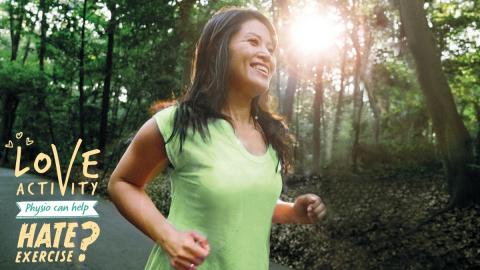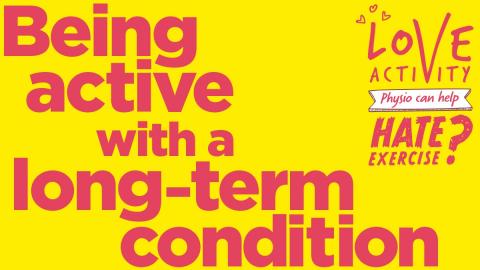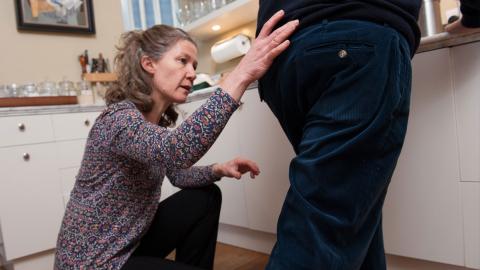Fitting more activity into your day doesn't have to mean strenuous exercise - it could mean anything as simple as going for a walk, doing housework or getting active in the garden.
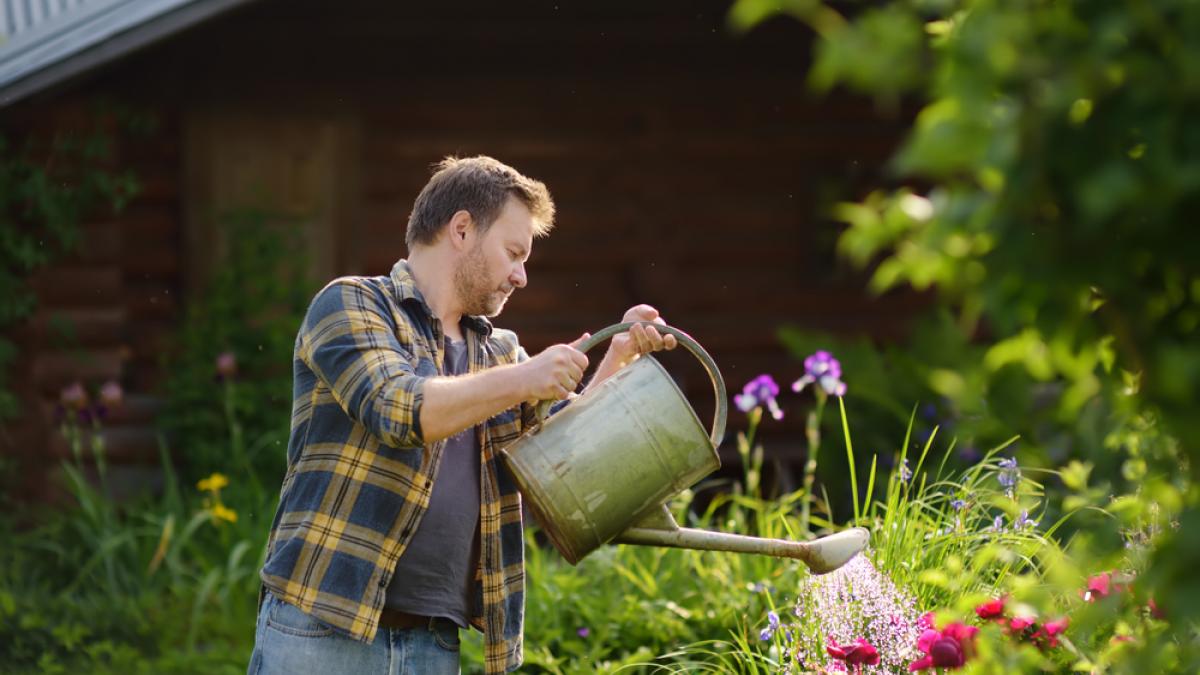
Did you know...
Unsure about what sort of activity to do?
If you're brand new to exercise then it might be an idea to consult a physio to find out what sort of activity you should be doing.
Being active can help you prevent and/or manage over 20 medical conditions, including:
- coronary heart disease
- type 2 diabetes
- cancer
- obesity
- back pain
- osteoarthritis
- depression
Ways to get active
Walking
Exercising outdoors is beneficial for both your body and mind, so take a brisk walk for as long as you can – 30 minutes is a good target to work towards.
Top tip: keep an exercise diary
Noting down what activities you have done, for how long, how you felt afterwards, and any goals you reached.
Keep challenging yourself and reward yourself for progress.
There are lots of ways to build more walking into your daily routine, or to make it more interesting. For example:
- Walk to a corner shop, post office or post box further away than usual
- Take your favourite music along with you – especially something with an energetic beat
- Set a good example and take someone walking with you. Your good habits can help make others healthier too!
- Where possible, walk up and down stairs, instead of taking the lift or standing still on an escalator. Stair climbing is an effective workout – it gets your heart rate going, burns calories, and can increase the strength in your legs and buttocks. If you don’t have access to stairs, you can gain similar benefits from marching on the spot.
If you have a phone or activity tracker with a step counter then set yourself the challenge of doing a certain amount of steps each day. Once you hit this target you can challenge yourself a bit further by setting it a bit higher.
Stay active at work
Just because you sit at a desk all day doesn't mean you don't have time to exercise. There are lots of ways you can fit some extra activity into your day, from going for a walk at lunchtime or doing our series of simple desk-based stretches.
Keeping active at home
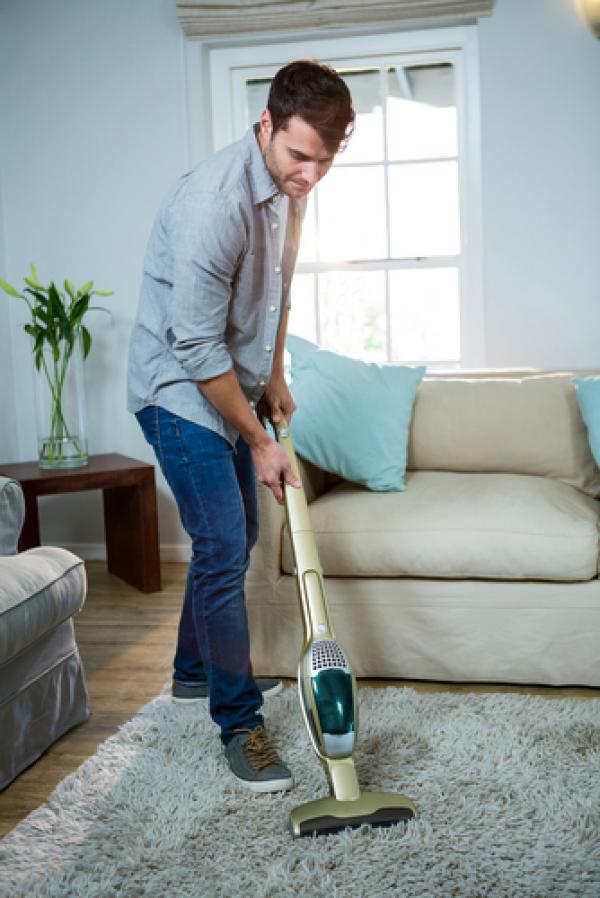
Housework is a great way to combine a little exercise with your usual activities. Turn chores into a workout by speeding them up or being more energetic. For instance:
- When loading and unloading the washing machine, stand with your feet hip-width apart and your back straight, hold in your tummy muscles, bend your knees in a squat, then straighten them again
- When hoovering, use long drawn-out movements and use the whole body instead of just your arm
- Time yourself to see how long it takes you to dust all the furniture in a room, then when it needs to be done again try to get it done faster
If you're watching TV then use advert breaks as a reminder to get up and move around or change position. If you can, instead of using the remote control, walk to the TV and change the channel or volume.
Keeping active in the garden
Gardening is a great form of alternative exercise. Some vigorous green-fingered activity such as pruning, planting, digging and weeding, will improve both physical and mental health. Gardening can be hard work so make sure you warm up with a few simple stretching exercises.
The DIY gym
Keep your muscles toned and flexible and your body will be more able to cope with physical stresses. Your body will be stronger and more stable – making you less prone to injuries and illness.
You don't need to join a gym or buy extra exercise equipment for this. There are lots of ways to use everyday objects and your own body weight to build strength:
- Holding a small bottle of water, sit down or stand with your feet hip-width apart and your back straight, bend your arm at the elbow in a bicep curl. Keep your elbow close to your body. Repeat 10 times, then swap arms
- For your triceps, hold the bottle above your head with your arm straight. Bend at the elbow to lower the bottle towards your shoulder, then straighten again.Repeat 10 times, then swap arms
- Facing a wall and placing your hands palm-down on it for support, raise one leg out to the side and lower it again.Repeat 10 times, then switch legs. This will help tone your buttock muscles
- When you’re sitting down, march on the spot for 2-3 minutes. Do this as many times as you can throughout the day to burn calories and maintain good circulation in your lower limbs. This can be done at your desk, on the sofa, at the dinner table, on the bus
- Reach over your head, bending to the side at your waist and then straighten up. Swap sides and repeat 10 times.
If you're after something a bit more structured and have a mobile device, remember that there are lots of free workouts you can access on YouTube - from cardio to pilates there's something for everyone, no matter what level you're at.
There's also a lot of fitness apps you can download to your mobile device for free or for a small cost. Have a look in the App Store or Google Play and you can find everything from HIIT (high intensity interval training) to yoga to couch to 5k running programmes.
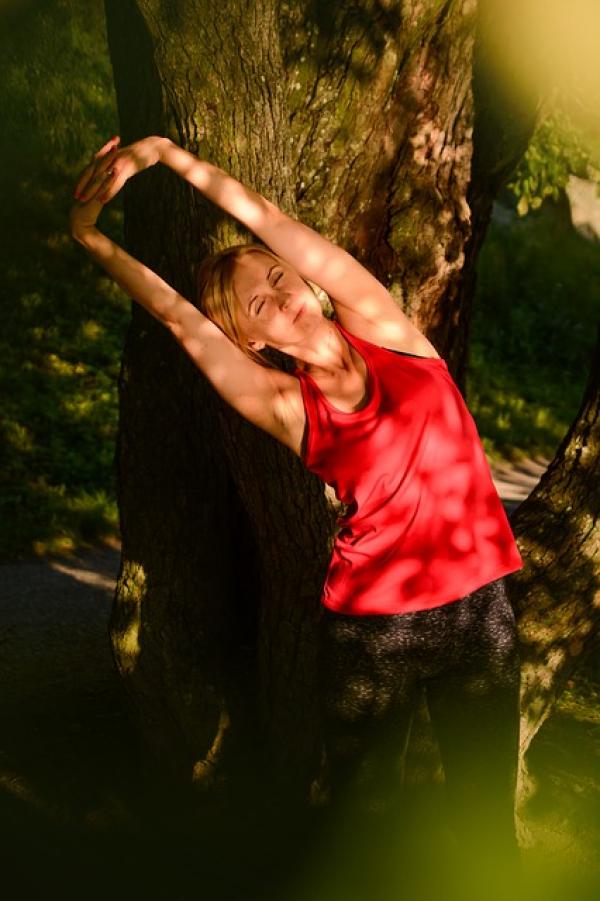
Always remember to stretch
Whenever you're doing exercise remember that it's important to stretch before and afterwards.
Stretching after exercise helps your muscles recover and keeps them healthy and flexible. It also helps prevents injury.
When stretching you must avoid bouncing back and forth. You should hold a position for up to 30 seconds when stretching.
Our pages on exercise advice show you some stretches you can do.
Pushing yourself further
After you've been doing a certain exercise for a while you may get used to it and want to push yourself further to improve your fitness.
There are four ways to progress the amount of activity you do:
- Frequency – increase the number of times per week that you are active
- Intensity – walk that little bit faster, cycle that little bit harder, or dig harder in the garden
- Time – increase the amount of time you spend on each session of exercise
- Type – if you’re comfortable with the exercise you’re doing, try something a bit more demanding. For example, progress from walking to a slow jog, or do something that uses the upper and lower body, like tennis.




































